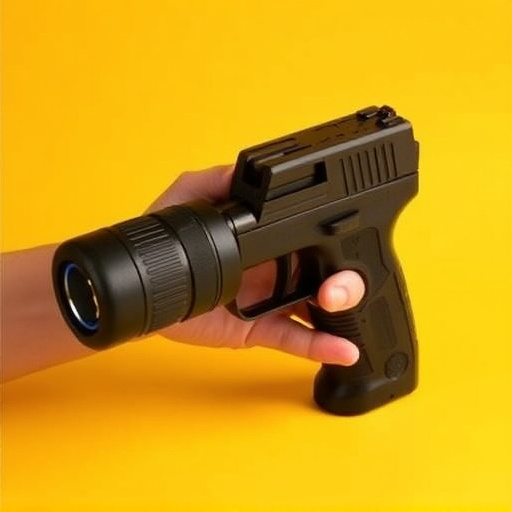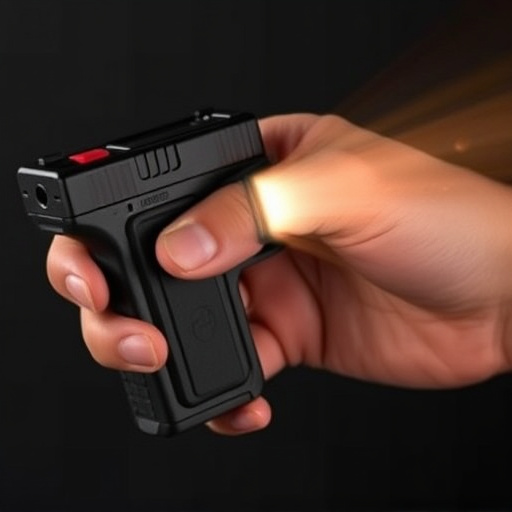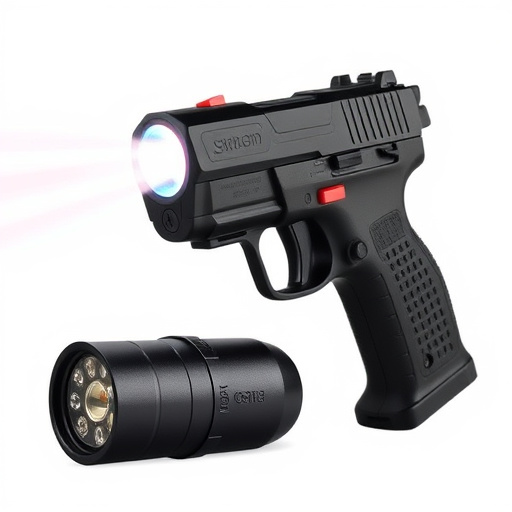Slider stun guns offer a cutting-edge solution for personal defense, allowing users to control shock intensity via a sliding mechanism. Effective deployment requires understanding specific model mechanics and practicing in controlled environments. These devices disrupt the assailant's neuromuscular system with high-voltage, low-current impulses, causing temporary paralysis and disorientation. Contact points along the sliding mechanism ensure maximum surface area contact for powerful and consistent shocks. In real-world scenarios, slider stun guns are versatile tools for personal safety and property security, requiring proper training, situational awareness, and responsible use in accordance with local laws.
“Uncover the startling effectiveness of slider stun guns, a revolutionary non-lethal self-defense tool. This comprehensive guide explores the intricate details behind these powerful devices. From understanding the technology to delving into the science, we examine how contact points play a pivotal role in their performance. Discover real-world use cases and essential safety measures, as we navigate the world of slider stun guns, empowering individuals with knowledge for informed decisions.”
- Understanding Slider Stun Guns: A Comprehensive Overview
- The Science Behind Stun Gun Effectiveness
- Contact Points and Their Role in Stun Gun Performance
- Real-World Applications: When and Where to Use a Stun Gun
- Safety Measures and Considerations for Stun Gun Users
Understanding Slider Stun Guns: A Comprehensive Overview

Slider stun guns represent a unique and evolving category in personal defense weaponry. These devices differ from traditional stun guns by featuring a sliding mechanism that allows users to control the intensity of the electric shock delivered. This innovative design offers several advantages, such as reduced risk of accidental discharge and the ability to tailor the force level to specific situations. By adjusting the slider, users can select between lower settings for non-lethal self-defense in close quarters or higher settings suitable for more threatening scenarios.
Comprehending the slider functionality is crucial for effective deployment. Each stun gun model may have slightly different sliding mechanisms, so familiarizing oneself with the specific operation of a chosen device is essential. Manufacturers typically provide user manuals detailing safe handling practices and usage guidelines. Practicing with the slider in controlled environments enables users to develop muscle memory, ensuring they can make swift adjustments during emergencies. This comprehensive overview highlights not only the technical aspects of slider stun guns but also underscores their potential as reliable tools for personal safety.
The Science Behind Stun Gun Effectiveness
The science behind a slider stun gun’s effectiveness lies in its ability to disrupt an assailant’s neuromuscular system through high-voltage, low-current electrical impulses. When activated, the stun gun delivers a powerful shock that overrides the body’s natural muscle control, causing the target to experience intense pain, temporary paralysis, and disorientation. This disruption prevents the muscles from contracting, effectively immobilizing the individual for a brief period.
The key to a slider stun gun’s success is its precision and targeted delivery system. The device is designed to make contact with specific areas of the body, such as the nerve centers or muscle clusters, to maximize the impact of the shock. This focus ensures that the energy is channeled efficiently, making the stun gun a reliable self-defense tool for individuals seeking to neutralize a threat quickly and temporarily without causing serious harm.
Contact Points and Their Role in Stun Gun Performance

Contact points play a pivotal role in the performance and effectiveness of a slider stun gun. These points, strategically designed to make direct contact with the target, are responsible for delivering an electric shock that temporarily incapacitates the individual. The precision and quality of these contacts can significantly impact the stun gun’s overall output and reliability.
In a slider stun gun, contact points are typically arranged in a specific pattern along the device’s sliding mechanism. This arrangement ensures maximum surface area contact during activation, allowing for a more powerful and consistent shock. The effectiveness of these contacts is influenced by factors such as material composition, sharpness, and maintenance—all of which contribute to the stun gun’s ability to effectively neutralize a threat in critical situations.
Real-World Applications: When and Where to Use a Stun Gun

In real-world scenarios, a slider stun gun proves most effective in situations where immediate incapacitation is crucial. Whether it’s for personal safety during evening walks or securing property, this compact and versatile device offers a non-lethal solution. Imagine finding yourself face-to-face with an aggressor; a swift slide of the stun gun can deliver a powerful electric shock, temporarily neutralizing the threat, allowing you to escape unharmed.
Public spaces like parks, parking lots, or even your own backyard can benefit from this technology. For security personnel, a slider stun gun is invaluable for crowd control and de-escalation tactics. Its discreet design ensures it blends into daily routines, yet its power is readily available when needed most, making it an indispensable tool in various settings.
Safety Measures and Considerations for Stun Gun Users

When using a slider stun gun, safety should always be the top priority. These devices can be powerful tools for self-defense, but they come with inherent risks if not handled correctly. Users must familiarize themselves with local laws and regulations governing stun guns to avoid legal repercussions. Additionally, proper training is essential; understanding the range, activation mechanisms, and any potential side effects of a slider stun gun ensures effective and safe deployment.
Stun gun users should also consider personal safety measures. This includes being aware of their surroundings and maintaining situational awareness when carrying or using the device. Stun guns are most effective when used as a last resort; de-escalation techniques and seeking help from authorities should be the primary responses to threatening situations. Regular maintenance and inspection of the stun gun, including checking battery life and ensuring proper functionality, are crucial steps in ensuring safety and reliability.
In conclusion, slider stun guns offer a powerful tool for personal safety when used appropriately. Understanding their mechanism, the science behind their effectiveness, and the crucial role of contact points can ensure optimal performance in real-world scenarios. Always prioritize safety measures and consider legal implications when employing a stun gun, making it a responsible choice for self-defense.
